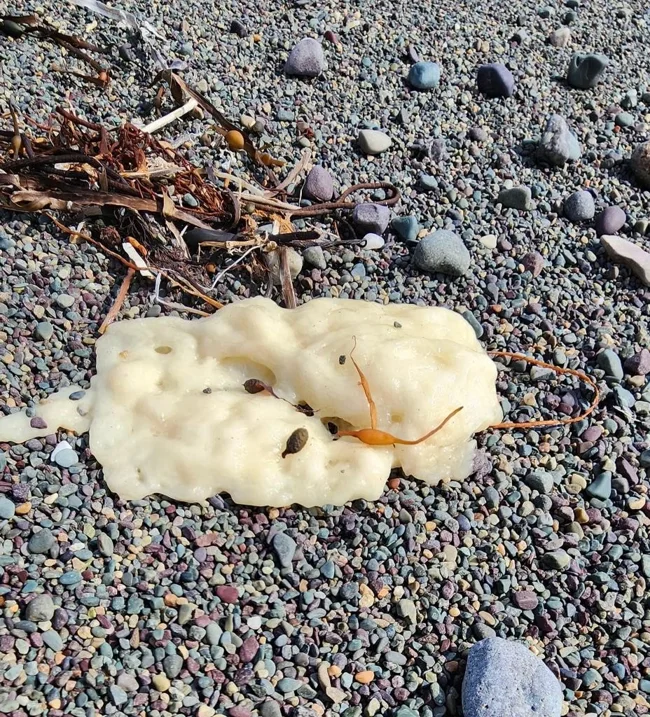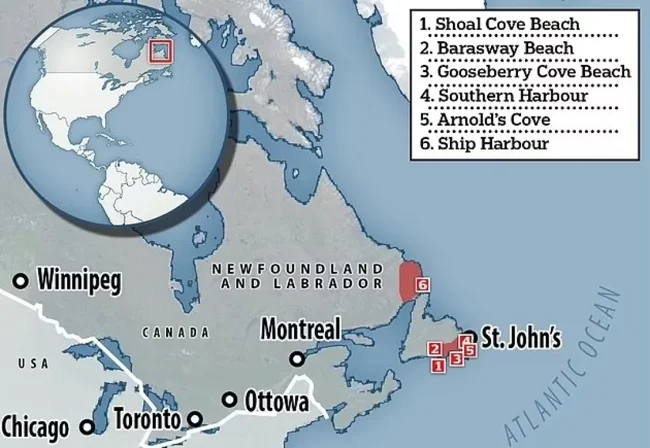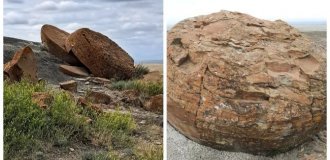Something throws pieces of "dough" out of sea water: scientists don't know what it is (4 photos)
For over a month now, strange "doughy" white drops have been found on Canadian beaches and no one seems to know what they are. 
The ocean covers more than half of the planet's surface and is still the least studied place on Earth, which is why it never ceases to amaze scientists. For example, strange "doughy" white drops have been found on Newfoundland beaches for over a month now and no one can say what they are.
According to local resident Stan Tobin, the mysterious drops first began appearing on the beach on at least September 7. Witnesses described them as smelling of vegetable oil and looking like something in the ocean was trying to bake bread, but not very well. Another local, Phillip Grace, said the strange blobs looked like "touton" dough, the local version of fried biscuits. 
The strange structures were known to be covered in seaweed, sand and pebbles. Some also claim that the blobs were surprisingly flammable, with a pockmarked slimy surface and hard, spongy flesh. What's more, locals and scientists claim that the samples ranged in size from coins to dinner plates.
It should be noted that scientists and local authorities are still in no hurry to confirm what exactly it is, but there are some assumptions. According to Samantha Byard, a representative of the Ministry of Environment and Climate Change of Canada, there is a version about the "possibility of criminal involvement in the drops." If law enforcement agencies manage to find evidence of a possible violation, they will take appropriate measures. 
Some have suggested that the strange "blobs" are nothing more than fungus or mold, while others believe they may be made of palm oil, paraffin wax, or even ambergris, a rare and valuable substance produced by whales and used in the perfume industry.
Scientists from the Department of Fisheries and Oceans Canada say they and their colleagues are confident that the substance that has appeared on Canadian beaches is not a sea sponge and does not contain any biological material. As a result, scientists came to the conclusion that the strange substance is probably some kind of oil. 
Unfortunately, this is the only thing scientists are sure of: the samples are not biological and are not made of any form of petroleum hydrocarbon, petroleum grease, biofuel or biodiesel. However, research is ongoing and scientists plan to solve this mystery in the near future.
According to Nadine Wells, section manager of the Marine Environmental Research Group at DFO's Northwest Atlantic Fisheries Center in St. John's, this discovery really surprised scientists, as they had never seen anything like it before. That is why scientists are so focused on studying the samples to finally solve this mystery.





















